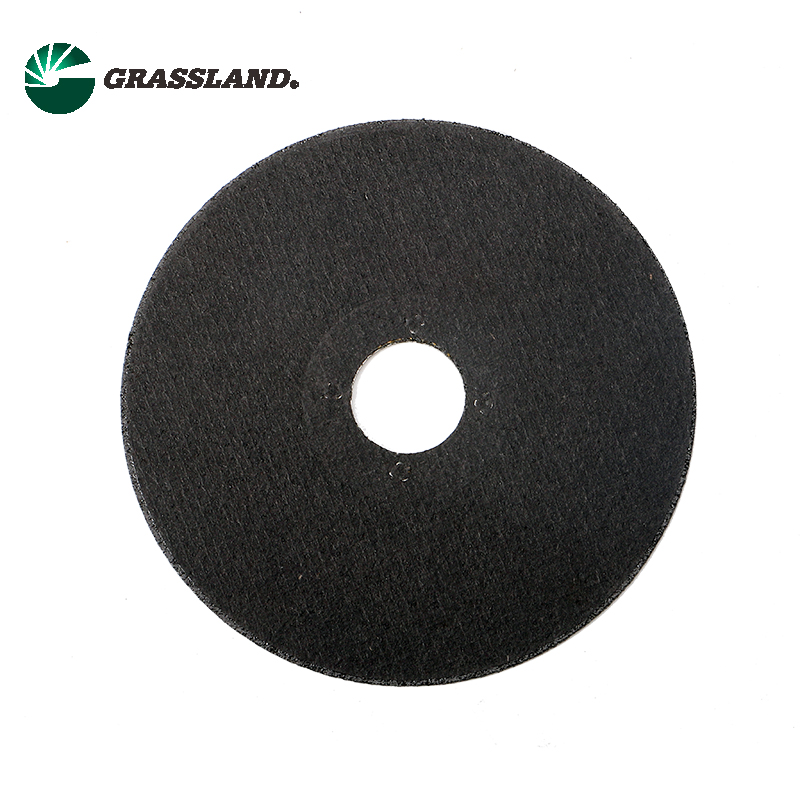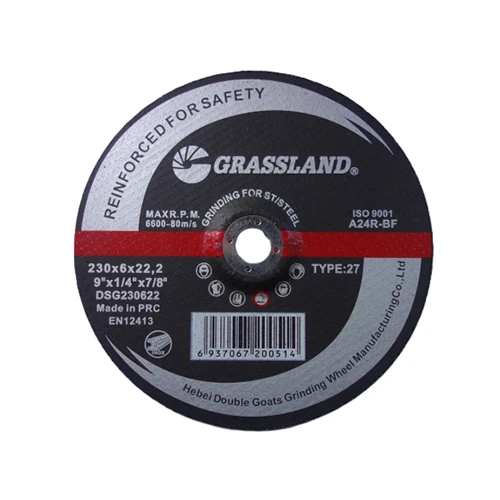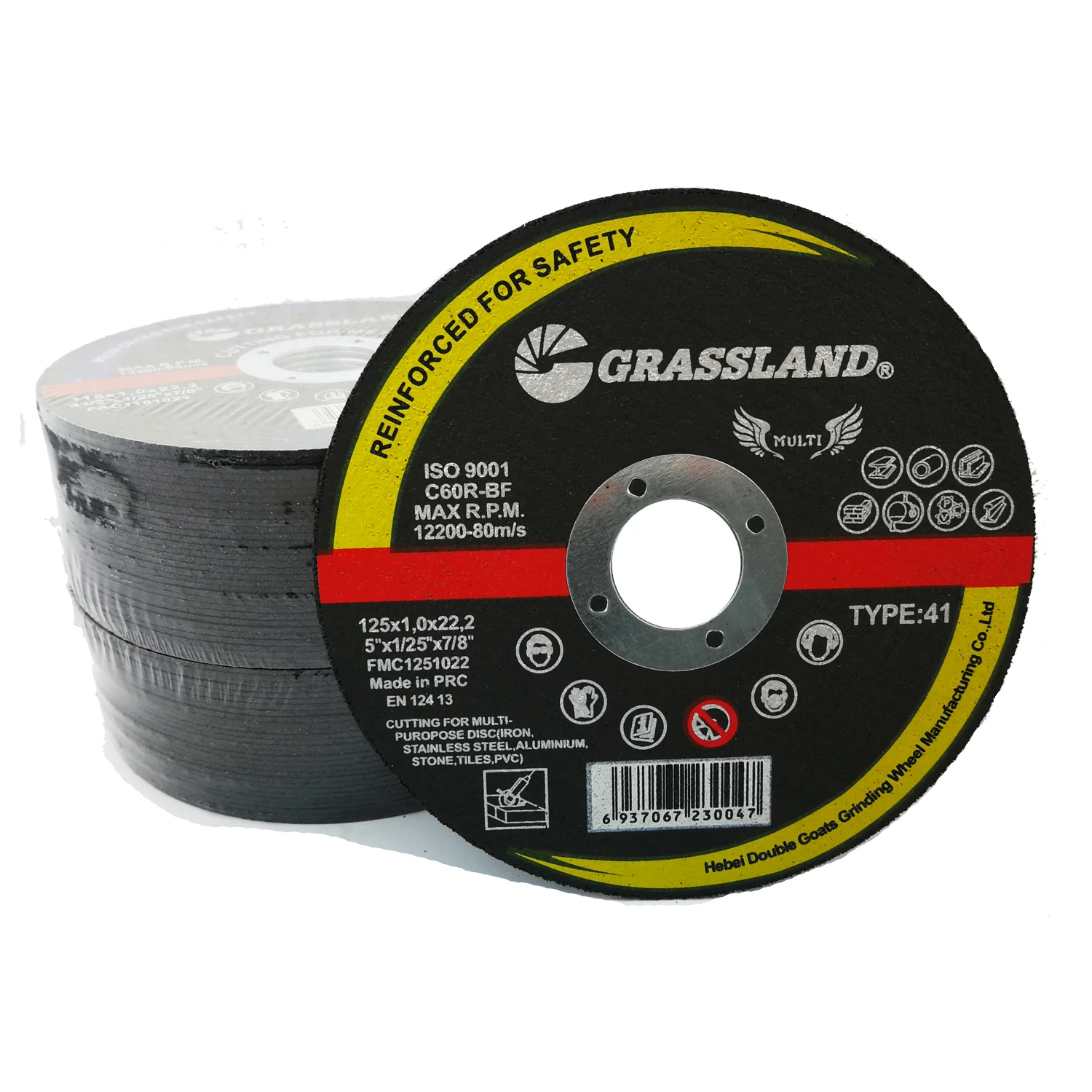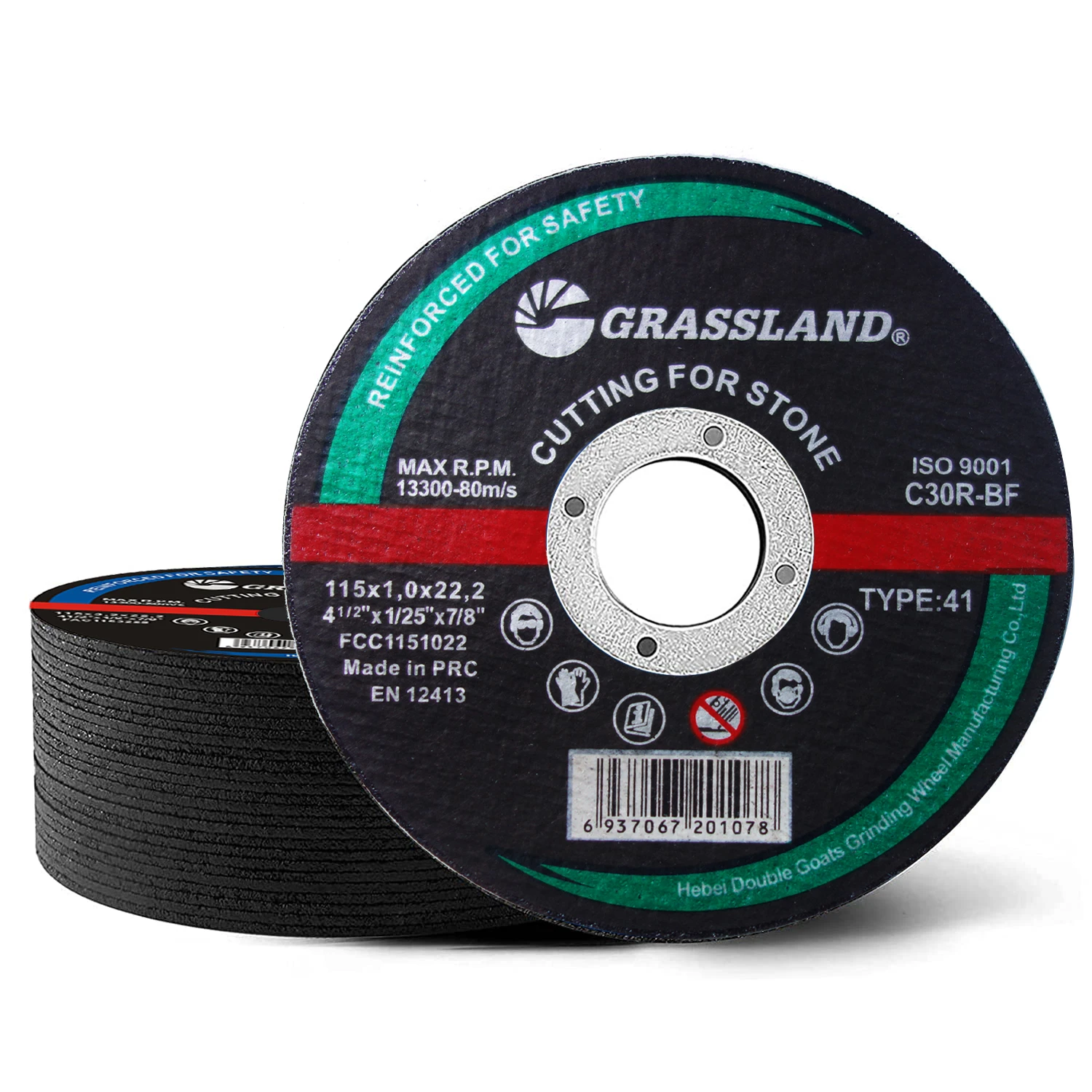Unlocking Precision: The Role of Advanced Cutting Discs in Modern Fabrication
In the demanding landscape of modern industrial fabrication, the efficiency and precision of cutting tools are paramount. Among these, stainless steel cutting discs stand out as indispensable tools. These specialized abrasive wheels are engineered to deliver clean, fast cuts through various grades of stainless steel, minimizing heat buildup and material distortion. Their advanced composition and manufacturing processes ensure optimal performance in high-stress environments, making them a critical component for achieving superior finish quality and operational productivity. Understanding their intricate design and application is key to maximizing their potential in industries ranging from automotive to construction, where precision and material integrity are non-negotiable.
The relentless pursuit of higher material strength and durability in industrial applications has driven significant advancements in abrasive technology. This section delves into the foundational aspects of these critical tools, exploring how they meet the rigorous demands of contemporary metalworking, focusing on their unique characteristics that enable efficient and precise cutting of stainless steel alloys. From basic structural work to intricate fabrication projects, the right stainless steel cutting disc makes a tangible difference in both safety and output quality.
Industry Trends & Technological Advancements in Abrasive Technology
The global market for abrasive products, particularly those tailored for metal fabrication, is experiencing dynamic shifts driven by innovation and increasingly stringent performance requirements. Current trends indicate a strong move towards thinner, faster, and more durable stainless steel cutting wheels. Manufacturers are investing heavily in research and development to create discs that not only cut quicker but also generate less heat, thereby extending tool life and preserving the integrity of the workpiece. This includes advancements in abrasive grain technology, such as ceramic alumina and zirconia alumina, which offer superior sharpness and wear resistance compared to traditional aluminum oxide abrasives.
Furthermore, the integration of advanced bonding agents, often resinoid, plays a crucial role in enhancing the disc's structural integrity and cutting performance. These improved bonds ensure that the abrasive grains are held firmly in place during aggressive cutting, preventing premature shedding and ensuring consistent performance throughout the disc's lifespan. The focus on "Inox" specific formulations means discs are engineered to prevent contamination and discoloration of stainless steel, which is critical for maintaining corrosion resistance. These technological leaps directly contribute to increased productivity and reduced operational costs for businesses relying on precise metal cutting. The evolution of the cutting disc for stainless continues to prioritize user safety and environmental considerations, pushing for cleaner cuts and reduced airborne particles.
One notable trend is the push for discs with a reduced kerf (thickness), allowing for minimal material loss and faster cutting speeds. This innovation is particularly beneficial in industries where material efficiency and rapid production cycles are paramount. The ongoing refinement of manufacturing processes, including automated pressing and curing techniques, further ensures uniform quality and consistent performance across batches, addressing the high standards demanded by industrial users of stainless steel cutting discs.
Craftsmanship Detail: The Manufacturing Journey of High-Performance Cutting Discs
The production of high-quality stainless steel cutting discs is a meticulous process involving precise material selection and advanced manufacturing techniques. It begins with the careful selection of premium abrasive grains, typically aluminum oxide, zirconia alumina, or ceramic alumina, chosen for their hardness and fracture toughness. These grains are then blended with a resinoid bonding system, often incorporating synthetic resins and filler materials, which determine the disc's flexibility, durability, and cutting aggression. The formulation is critical, as it dictates how well the grains are retained and released during the cutting action.
Once the abrasive and resin mix is prepared, it is pressed into disc form using high-tonnage hydraulic presses, ensuring uniform density and consistent thickness. This pressing stage is vital for the structural integrity of the disc, preventing breakages under operational stress. Following pressing, the discs undergo a precisely controlled curing process in specialized ovens. This thermal treatment solidifies the resin bond, transforming the disc into a resilient, high-performance abrasive tool. The curing profile—temperature, duration, and ramp rates—is meticulously monitored to achieve optimal hardness and strength, ensuring the disc can withstand the extreme forces encountered during high-speed cutting of materials like stainless steel.
Quality control is integrated throughout the entire manufacturing process. Discs are subjected to rigorous inspection standards, adhering to international benchmarks such as ISO 9001 for quality management and ANSI B7.1 for safety requirements of abrasive wheels. Key tests include radial fracture testing to assess burst strength, imbalance testing to ensure smooth operation, and performance cutting tests on actual stainless steel samples to verify cutting speed and disc wear rate. These stringent checks guarantee that each stainless cutting disc meets the highest levels of safety, efficiency, and longevity before it reaches the end-user. Products are specifically formulated to be free of iron, sulfur, and chlorine (Fe, S, Cl < 0.1%), preventing contamination and post-cut corrosion on stainless steel workpieces, a crucial factor for applications in industries like petrochemical and food processing where material purity is paramount.
The sophisticated manufacturing journey ensures that discs like the Grassland 4.5 Inch 115 Mm X 1 Mm X 22.2 Mm Inox Cutting Disc deliver superior performance, extended lifespan, and exceptional safety, crucial for applications in petrochemical, metallurgy, and water supply/drainage sectors where corrosion resistance and precision are critical. The specialized "Inox" formulation of these discs further emphasizes their anti-corrosion properties, making them ideal for environments where material purity and anti-rust properties are vital.
Technical Parameters & Performance Benchmarks for Cutting Discs
Selecting the correct stainless steel cutting disc requires a comprehensive understanding of its technical specifications and performance characteristics. These parameters directly impact cutting efficiency, safety, and the quality of the finish. Below is a detailed table outlining common specifications crucial for B2B procurement and engineering evaluation, ensuring the disc chosen aligns perfectly with operational demands and material properties.

Fig 1: A range of high-performance stainless steel cutting discs.
| Parameter | Description | Typical Range/Value | Impact on Performance |
|---|---|---|---|
| Disc Diameter | Outer diameter of the disc. Common sizes match angle grinder specifications. | 4.5" (115mm), 5" (125mm), 7" (180mm), 9" (230mm) | Determines cutting depth and compatibility with tools. |
| Disc Thickness (Kerf) | The width of the cut. Thinner discs yield less material loss and faster cuts. | 1.0mm, 1.2mm, 1.6mm, 2.5mm | Faster cutting, less material waste for thinner discs; more aggressive cutting for thicker. |
| Bore Diameter | Inner hole diameter for mounting on an angle grinder spindle. | 22.23mm (7/8") | Ensures proper fit and safe operation on compatible tools. |
| Max. RPM | Maximum rotational speed the disc can safely withstand. | 8,500 - 13,300 RPM (e.g., 13,300 RPM for 115mm) | Critical safety parameter; mismatch can lead to disc failure. |
| Abrasive Grain Type | Type of abrasive material used. | Aluminum Oxide, Zirconia Alumina, Ceramic Alumina | Impacts cutting speed, disc life, and heat generation. Alumina for general, Zirconia/Ceramic for high-performance. |
| Bonding Agent | Material holding abrasive grains together. | Resinoid (Phenolic Resin) | Affects flexibility, aggression, and disc wear characteristics. |
| Application Specificity | Designed for specific materials. "Inox" for stainless steel. | Inox (Fe, S, Cl < 0.1%), Metal, Stone | Prevents contamination and ensures optimal cutting performance on target material. |
| Certifications | Compliance with industry safety and quality standards. | EN12413, ISO 9001, ANSI B7.1, MPA Hannover | Indicates product reliability, safety, and adherence to international norms. |
These specifications are crucial for procurement managers and technical buyers when assessing a stainless steel cutting disc. For example, a thinner disc (1.0mm) is ideal for fast, clean cuts with minimal material waste, while a slightly thicker disc (1.6mm) might offer more durability for heavy-duty applications. The "Inox" designation confirms the disc is formulated to prevent carbon contamination, which is vital for preserving the corrosion resistance of stainless steel.
Application Scenarios & Industry Impact of Inox Cutting Discs
The versatility and precision of cutting disc for stainless steel make them indispensable across a wide array of industrial applications. Their primary role is in severing, trimming, and notching stainless steel workpieces with exceptional accuracy and minimal burring. This capability is critical in industries where subsequent finishing processes need to be minimized, thereby reducing production time and cost.
Key Application Sectors:
- Petrochemical & Energy: Used for cutting stainless steel pipes, tubes, and structural components in refineries, power plants, and offshore platforms where corrosion resistance is paramount. The "Inox" designation ensures no ferrous contamination, which could lead to critical system failures.
- Food & Pharmaceutical Processing: Essential for fabricating stainless steel tanks, pipelines, and machinery. Hygiene and anti-corrosion properties of the material, maintained by using contamination-free cutting tools, are non-negotiable in these sectors.
- Construction & Architectural Fabrication: Employed for cutting stainless steel handrails, cladding, frameworks, and decorative elements. The clean cuts contribute to aesthetic appeal and structural integrity.
- Automotive & Aerospace: Used in the production of exhaust systems, chassis components, and specialized parts where high-strength, lightweight stainless alloys are utilized. Precision cutting is vital for component fit and performance.
- General Metal Fabrication: From small workshops to large manufacturing plants, stainless steel grinding discs are fundamental for custom fabrication, repair work, and assembly operations involving various grades of stainless steel.
In these scenarios, the technical advantages of using an optimized stainless cutting disc are significant: reduced heat affected zones (HAZ) leading to less material distortion, minimal burr formation requiring less post-cut cleanup, and enhanced tool life which translates to lower consumable costs. The specific formulation for stainless steel prevents the introduction of impurities, thereby maintaining the material's inherent corrosion resistance and aesthetic qualities. This not only enhances product quality but also contributes to greater operational efficiency and safety on the shop floor.
Spotlight on Excellence: Grassland 4.5 Inch 115 Mm X 1 Mm X 22.2 Mm Inox Cutting Disc
The Grassland 4.5 Inch 115 Mm X 1 Mm X 22.2 Mm Inox Cutting Disc For Stainless Steel Resinoid Cut-off Wheels exemplifies advanced abrasive technology designed for the most demanding stainless steel applications. This specific product is engineered to deliver a superior balance of speed, precision, and longevity, making it a preferred choice for professionals. Its ultra-thin 1.0mm profile ensures minimal material loss and allows for exceptionally fast, clean cuts, reducing the effort and time required for each operation. The resinoid bond combined with high-quality abrasive grains provides a consistent cut rate and extended disc life, critical for high-volume production environments.
Key features of the Grassland stainless steel cutting disc include its "Inox" specific formulation, which means it is free from iron, sulfur, and chlorine. This crucial characteristic prevents any contamination of the stainless steel workpiece, thereby preserving its corrosion resistance and preventing unsightly discoloration or rust formation after cutting. Such purity is indispensable in sensitive applications like food processing equipment, medical devices, and architectural stainless steel components where surface integrity is paramount.

Fig 2: Close-up of a Grassland Inox stainless steel grinding disc, highlighting its precision design.
With a maximum operating speed carefully calibrated to its dimensions, this Grassland cutting disc for stainless ensures both safety and peak performance when paired with compatible angle grinders. Its design is a testament to the meticulous engineering aimed at providing efficiency, material integrity, and long-term cost savings to industrial users. This particular model represents the culmination of expertise in abrasive manufacturing, tailored specifically for optimal results on stainless steel.
Comparative Analysis: Choosing the Right Stainless Steel Cutting Disc
When investing in stainless steel cutting discs, it's essential to look beyond basic specifications and consider performance metrics that impact overall operational efficiency and cost-effectiveness. A comprehensive comparison involves evaluating factors such as cutting speed, disc life, heat generation, and safety compliance. While many discs may appear similar, subtle differences in abrasive composition, bonding technology, and reinforcement can significantly alter their performance profile.
Comparative Metrics for Industrial-Grade Cutting Discs:
| Feature/Metric | Standard Metal Cutting Disc | Optimized Inox Cutting Disc (e.g., Grassland) |
|---|---|---|
| Abrasive Type | Aluminum Oxide | Premium Aluminum Oxide / Zirconia Alumina (Fe, S, Cl Free) |
| Target Material | General Carbon Steel, Mild Steel | Stainless Steel (Inox), High-Alloy Steels |
| Cutting Speed | Moderate | Fast to Very Fast (especially 1.0mm thickness) |
| Disc Life | Standard | Extended (due to superior grain retention and wear resistance) |
| Heat Generation | Higher, potential for discoloration | Lower, minimizes material distortion and HAZ |
| Contamination Risk | High (contains iron, sulfur, chlorine) | Negligible (Fe, S, Cl < 0.1%), preserves corrosion resistance |
| Burr Formation | Moderate to high | Minimal, reduces post-processing needs |
| Cost Efficiency (per cut) | Lower initial cost, higher overall cost due to lower efficiency/life | Higher initial cost, lower overall cost due to superior performance and lifespan |
This comparative analysis underscores why a specialized stainless steel grinding disc, formulated as "Inox," is not just an option but a necessity for optimal stainless steel processing. The initial investment in a high-quality disc is quickly recouped through increased productivity, reduced material waste, and the elimination of costly post-cutting rework. Ensuring supplier compliance with international standards (e.g., ISO, MPA Hannover) further guarantees consistent quality and safety, reinforcing trust in the product's performance.
Customization Solutions & Tailored Performance for Industrial Needs
Recognizing that industrial cutting requirements can vary significantly, leading manufacturers offer bespoke customization solutions for stainless steel cutting wheels. This service allows B2B clients to specify unique disc parameters, ensuring optimal performance for highly specialized applications or challenging materials. Customization can involve adjusting abrasive grit size for different surface finishes, modifying bonding agent formulations for specific material hardnesses, or tailoring disc dimensions for proprietary cutting machinery.
For instance, a client might require a particular blend of abrasive grains to achieve a finer finish on thin-gauge stainless steel tubing, or a reinforced disc for extreme cutting depths in heavy structural components. Collaborating with a manufacturer experienced in custom solutions ensures that the final product not only meets but exceeds performance expectations, leading to enhanced operational efficiency, reduced tool wear, and superior end-product quality. This tailored approach underscores a commitment to partnership and problem-solving, moving beyond off-the-shelf solutions to provide precise tooling for precise industrial challenges.
Case Studies & Real-World Impact: Proven Excellence
The real value of high-performance stainless steel cutting discs is best illustrated through their successful application in diverse industrial settings. Our products, including the Grassland Inox line, have consistently delivered exceptional results in challenging environments.
Case Study 1: Petrochemical Pipeline Fabrication
- Challenge: A major petrochemical plant needed to rapidly cut large quantities of schedule 80 stainless steel pipes (316L grade) for a new processing unit. Standard cutting discs caused significant heat buildup, leading to discoloration and requiring extensive post-cut grinding, delaying project timelines.
- Solution: We recommended and supplied our 115mm x 1.0mm Inox stainless cutting disc. Its ultra-thin profile and Fe/S/Cl-free composition drastically reduced heat generation and eliminated contamination.
- Result: The client reported a 30% increase in cutting speed and a 50% reduction in post-cut finishing time. Disc life also extended by 25%, leading to significant cost savings and enabling the project to stay ahead of schedule.
Case Study 2: Precision Fabrication for Medical Devices
- Challenge: A manufacturer of surgical instruments required extremely precise cuts on small diameter stainless steel rods (304 medical grade) with zero contamination risk and minimal burring to ensure biocompatibility and smooth functionality.
- Solution: We provided custom-sized Grassland stainless steel cutting discs with specialized bonding for ultra-fine cuts.
- Result: The client achieved cleaner, burr-free cuts, reducing rejection rates by 15% and eliminating the need for extensive deburring, which sped up their production cycle and improved product quality critical for FDA compliance.
These cases underscore the tangible benefits of partnering with a supplier committed to engineering excellence and understanding specific industrial demands for stainless steel cutting discs.
Ensuring Trust: FAQs, Delivery, & Warranty for Your Investment
Building long-term partnerships in the B2B sector hinges on transparency, reliability, and robust support systems. We are committed to providing comprehensive customer service, from initial inquiry to post-purchase support, ensuring complete satisfaction with our stainless steel cutting discs.
Frequently Asked Questions (FAQs):
-
Q: How does an "Inox" cutting disc differ from a standard metal cutting disc?
A: "Inox" discs are specifically formulated to be free of iron, sulfur, and chlorine (Fe, S, Cl < 0.1%). This prevents material contamination and corrosion on stainless steel workpieces, preserving their inherent properties and aesthetic finish, unlike standard discs that can cause rust spots or discoloration.
-
Q: What is the typical lifespan of a Grassland 4.5 Inch 115x1.0mm disc?
A: Lifespan varies based on material hardness, operator technique, and application. However, our optimized resinoid bond and premium abrasive grains generally provide extended disc life, offering superior cuts per disc compared to conventional alternatives under similar conditions. We can provide specific test data upon request.
-
Q: Are your discs compliant with international safety standards?
A: Absolutely. All our stainless steel grinding discs are manufactured and tested to comply with stringent international safety standards, including EN12413 and ANSI B7.1, and certified by reputable institutions like MPA Hannover, ensuring maximum safety and performance.
Delivery & Logistics:
We understand the critical importance of timely delivery for industrial operations. Our robust supply chain and logistics network ensure efficient processing and dispatch of orders. Standard delivery for in-stock items typically ranges from 3-7 business days within regional hubs, with expedited shipping options available for urgent requirements. For large volume or customized orders, precise delivery schedules are communicated and rigorously adhered to, ensuring minimal disruption to your production cycles.
Quality Assurance & Warranty:
Every Grassland stainless steel cutting wheel is backed by a comprehensive quality assurance program. We offer a standard 12-month warranty against manufacturing defects from the date of purchase. Our commitment to quality is upheld by our ISO 9001 certified manufacturing processes and continuous product performance monitoring. Should any product fail to meet its advertised specifications under normal operating conditions, our dedicated customer support team will facilitate a prompt resolution, including replacement or refund. Our goal is to ensure your complete confidence in our products and services.
Dedicated Customer Support:
Our expert technical support team is available to assist with product selection, application guidance, and troubleshooting. We provide tailored solutions and responsive communication channels to ensure that our clients receive the best possible support, solidifying our role as a trusted partner in your operational success with stainless steel cutting discs.
Conclusion: Elevating Performance with Specialized Cutting Solutions
The evolution of stainless steel cutting discs has transformed metal fabrication, moving beyond basic material separation to precise, contamination-free cutting that preserves material integrity and enhances operational efficiency. As industries continue to demand higher performance, longer tool life, and superior finish quality, specialized "Inox" discs, like the Grassland 4.5 Inch 115 Mm X 1 Mm X 22.2 Mm Inox Cutting Disc, emerge as critical components for success. Their meticulous manufacturing processes, adherence to international safety and quality standards, and tailored formulations ensure they meet the rigorous demands of sectors ranging from petrochemical to medical device manufacturing.
By prioritizing material purity, reducing heat generation, and maximizing cutting speed, these advanced abrasive tools not only streamline production workflows but also contribute significantly to reducing overall operational costs. Investing in high-quality, application-specific stainless cutting discs is a strategic decision that underpins both productivity and the long-term integrity of fabricated stainless steel structures and components. The continuous innovation in abrasive technology promises even greater efficiencies and capabilities, reinforcing the indispensable role of these discs in the future of industrial metalworking.
References
- ISO 9001:2015 Quality Management Systems – Requirements. International Organization for Standardization.
- ANSI B7.1-2017: Safety Requirements for the Use, Care, and Protection of Abrasive Wheels. American National Standards Institute.
- EN 12413:2007+A2:2016: Safety Requirements for Bonded Abrasive Products. European Standards.
- MPA Hannover - Materials Testing Institute. Accreditation for abrasive products testing and certification.
- Smith, J. D. (2022). "Advances in Abrasive Grain Technology for High-Performance Cutting Applications." Journal of Industrial Materials.
- Miller, A. B. (2021). "Impact of Resinoid Bonding Agents on Abrasive Wheel Durability and Efficiency." Advanced Manufacturing Processes Journal.
Post time:Aug - 13 - 2025
















